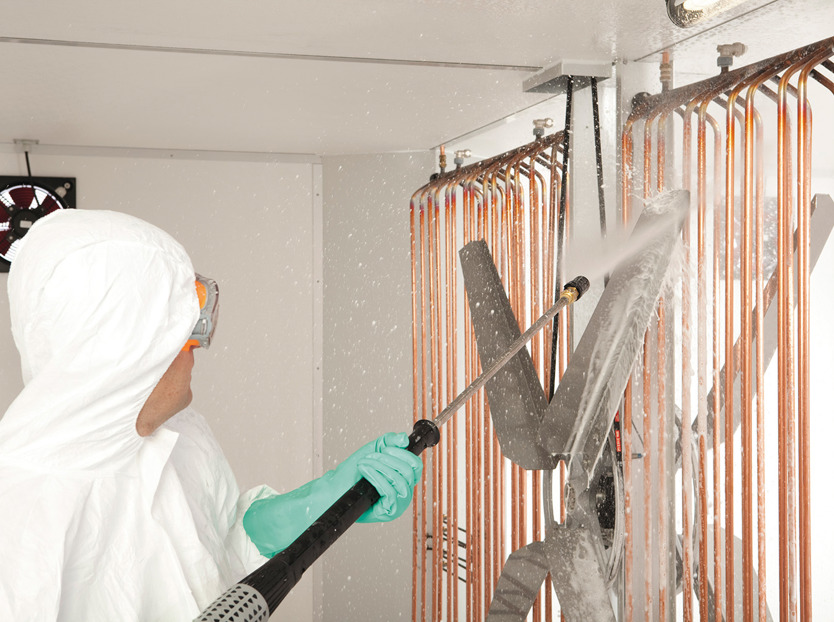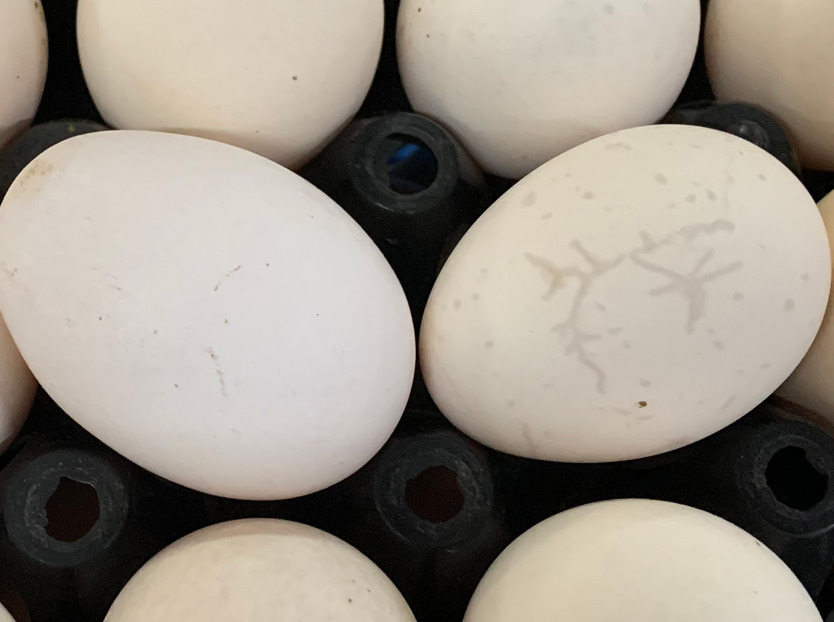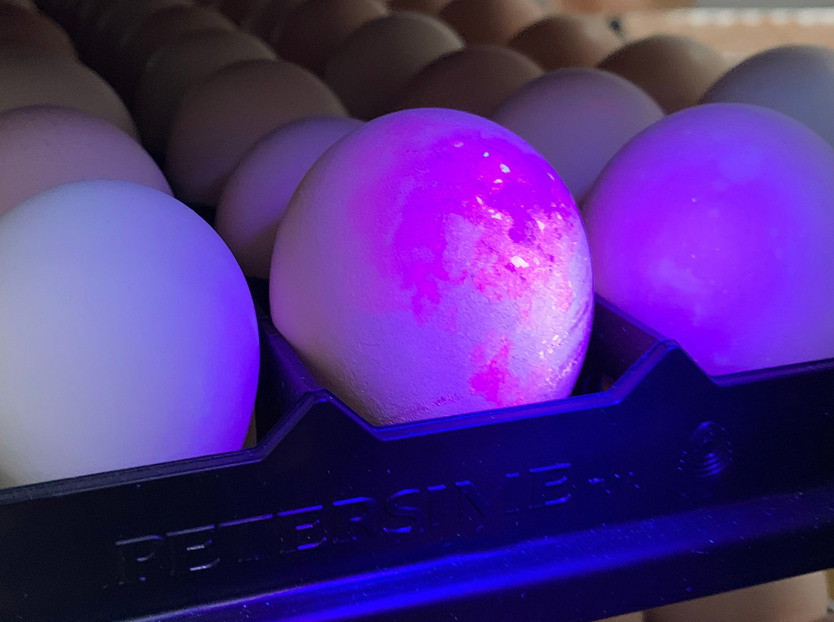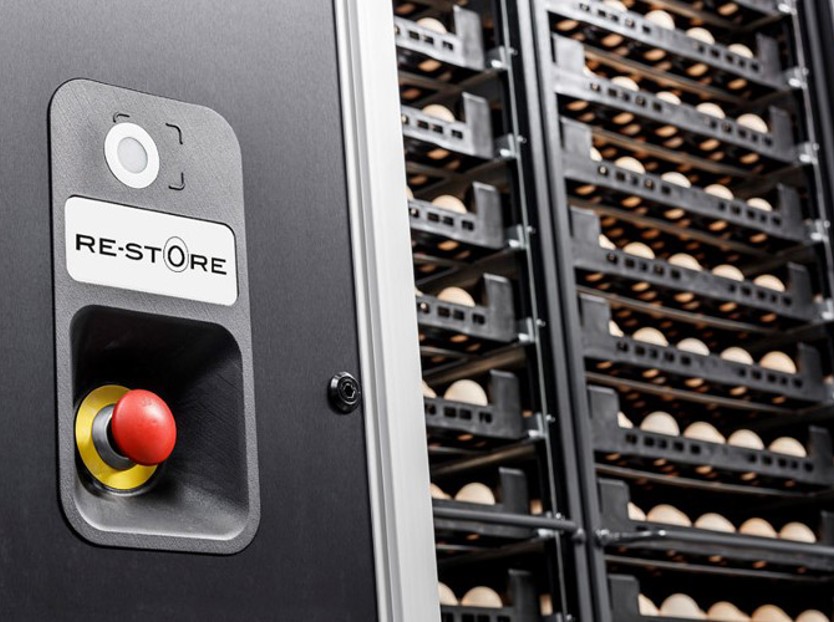Hatching eggs require careful management from the moment they are formed to the moment they hatch. Breeder farm conditions, egg handling conditions, incubation conditions… All these factors have an impact on chick embryo physiology and development, and consequently on the health and quality of new-born chicks. In this article, we examine the main factors that need to be considered to preserve the life of hatching eggs.
From breeder farm to hatchery
Incubators provide the optimum conditions for hatching eggs to become high-quality chicks. However, it is important to look further than that. The health and quality of a day-old chick is influenced by the complete ‘history’ of its hatching egg, from breeder farm to hatchery. It is therefore necessary to protect eggs against biosecurity threats, temperature fluctuations and improper handling during egg formation at the farm, storage at the farm, transportation to and handling at the hatchery.
1. Litter and nest management
The typical design of a breeding house involves a centre area filled with floor litter or litter nests. It is very important to keep the litter clean at all times to avoid potential contamination of the hatching eggs. The largest risk for the chick embryo comes from contamination immediately after the egg has been laid. As it cools down, the egg content retracts and suction from the outside to the inside occurs, meaning microorganisms can enter through the eggshell pores. If the environment is dirty, bacteria will gain entry to the egg. Eggs with dirty shells also carry harmful bacteria and are a biosecurity threat.
Any form of contamination will have a big negative impact on hatching results and chick quality:
- Weakened embryos
- Increased early embryonic mortality
- More exploders (‘bangers’)
- More dead in shell
- Increase in culls
- Higher first-week mortality
2. Egg collection and pre-selection
Laid eggs must be regularly collected to reduce the risk of breakage and contamination and all substandard eggs with, for instance, misshapen, cracked or thin shells must be removed.
In addition, an increased frequency of egg collections is important for the eggs’ gradual cooling towards the ‘physiological zero’ (i.e. temperature at which embryonic development is slowed down). If an egg stays in the nest for too long, it increases the risk of a continued cell multiplication (more info under point 5).
3. Egg disinfection and on-farm storage
Eggs can either be disinfected at the breeder farm or upon arrival at the hatchery. The purpose of disinfection is to prevent bacterial multiplication. Several practices for egg disinfection can be implemented (depending on the local rules and policies), such as:
- Fumigation
- Spraying
- Fogging
- Washing (mostly used for duck eggs)
After the eggs have been disinfected, they can be stored in an environmentally controlled farm storage room until transport to the hatchery. If the farm has no dedicated egg storage room, eggs must be transported to the hatchery daily.
4. Egg grading
Farm personnel conduct the pre-selection of hatching eggs, whereas hatchery personnel are responsible for the final egg quality control. A careful check of the incoming eggs’ external qualifications prior to incubation is strongly recommended. A good hatching egg should have the following characteristics:
- It is free from any deformities.
- It has a good shell quality.
- It is clean.
- Its colour is uniform within its batch.
5. Egg storage and recommended temperature profile
Hatching eggs are generally stored at the hatchery before they are loaded into the incubators. The total storage time varies, in some cases reaching 10 days or more. The V-flow diagram below (see figure 1) visualizes the temperature profile that should be followed: The hatchery’s egg storage room should be the coldest point along the breeder-farm-to-hatchery timeline. If there are uncontrolled temperature fluctuations in the process where specific points are warmer or cooler, then the embryo will be weakened, often resulting in an increased embryonic mortality, especially at the early embryonic stage.

- At oviposition, the egg‘s temperature is close to the hen’s body temperature, which is around 40-41°C (104-106°F).
- Once the egg is laid, it is important to gradually bring down the egg temperature towards the physiological zero to slow down embryonic development. This cooling process should start within 3 to 5 hours after oviposition. Particularly important are the storage conditions at the hatchery: They are essential to preserve the life of the embryos. The recommended temperature and humidity values depend on the number of days the chicken eggs are stored. It is generally recommended to fine-tune the absolute humidity in such a way to obtain 0.5% weight loss per week during storage and to maintain the relative humidity at an average of 70%.
| Storage time | Storage temperature (constant) | Absolute humidity |
| Short term: ≤ 4 days | 18°C (64°F) | 9 g/kg |
| Long term: > 4 days | 15°C (59°F) | 7 g/kg |
- As a next step, the eggs are pre-warmed (pre-heated) before incubation starts (the minimum pre-heating time is 4 hours; the maximum pre-heating time is 12 hours). Warming the eggs ensures that all the embryos have the same temperature when the incubation program starts; it also avoids condensation from forming on the egg surface.
- During incubation, an eggshell temperature of 37.8°C (100°F) is optimal.
It is well-known that hatch losses increase with each extra day of storage. By applying precise heat treatment in Petersime’s dedicated X-Streamer™ Re-Store incubator, you can regain a substantial part of the hatch that would have otherwise been lost due to storage. The process also takes all embryos to a more advanced developmental stage, improves their robustness and ensures the best possible uniformity at the start of incubation.
As sharing know-how within the poultry industry is paramount to Petersime’s mission, further findings and results of new studies will be shared in future articles.
In summary
There are various factors that influence the health and quality of new-born chicks. Hatching egg management is one of them. It is therefore essential to educate breeder farm and hatchery personnel on the importance of correct hatching egg management.
Petersime is happy to help you in learning more about hatching egg management. The topic is covered in our advanced training programmes, and more particularly the Hatchery Management Training. Please don’t hesitate to contact us for more information.




